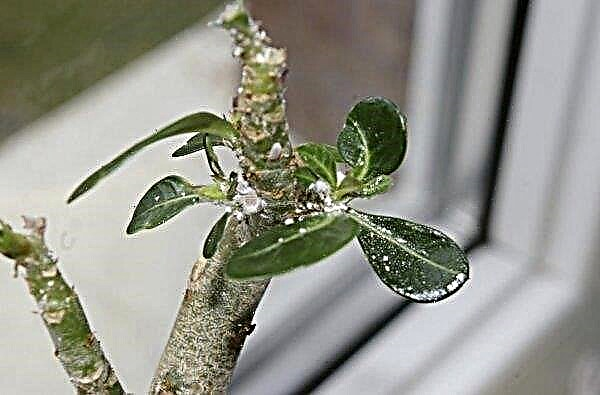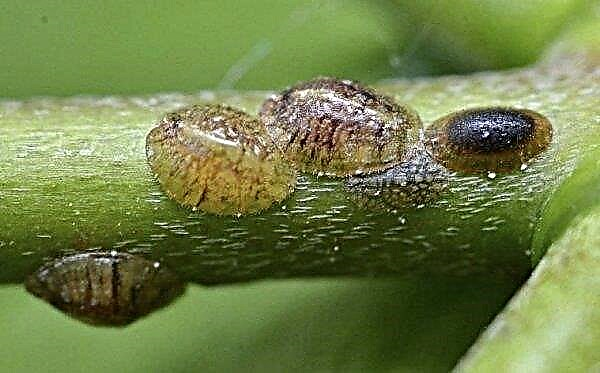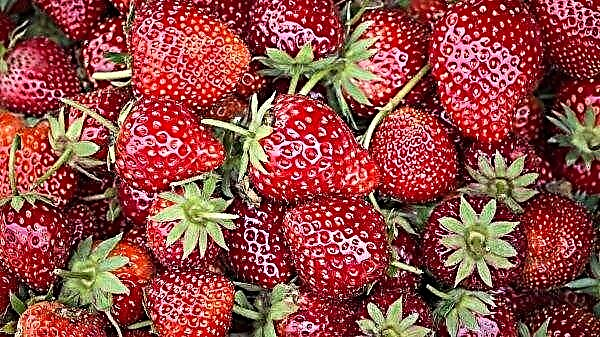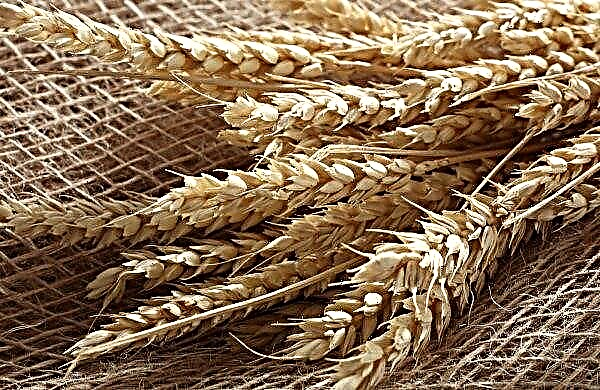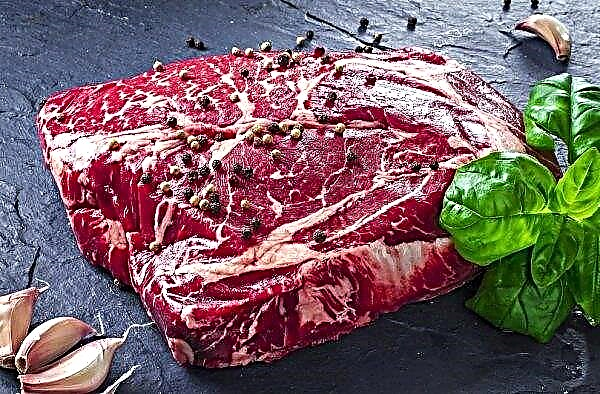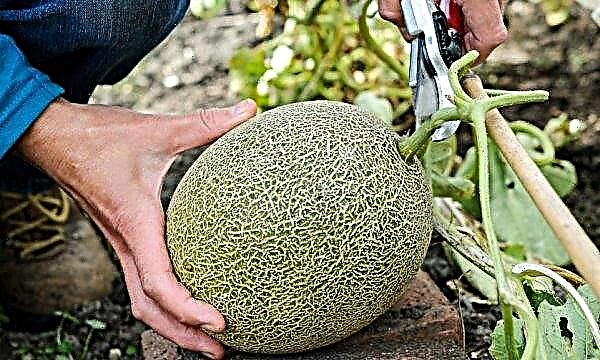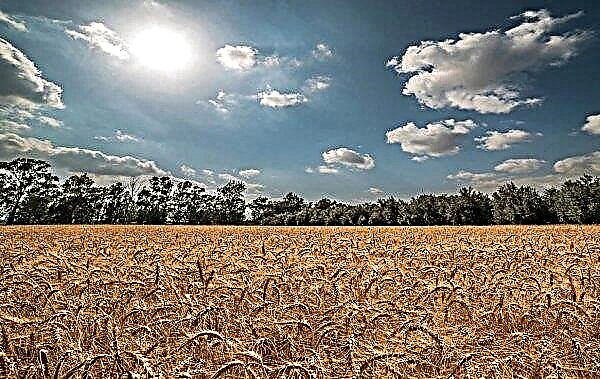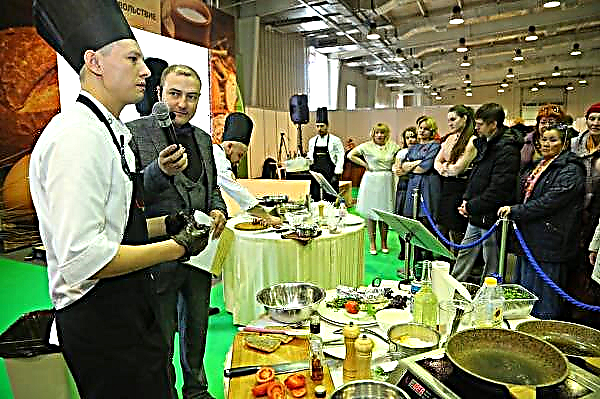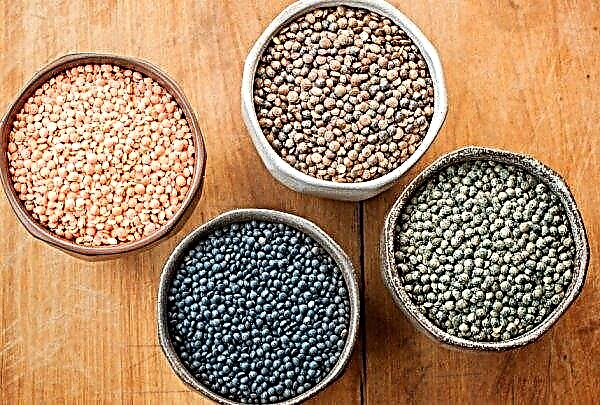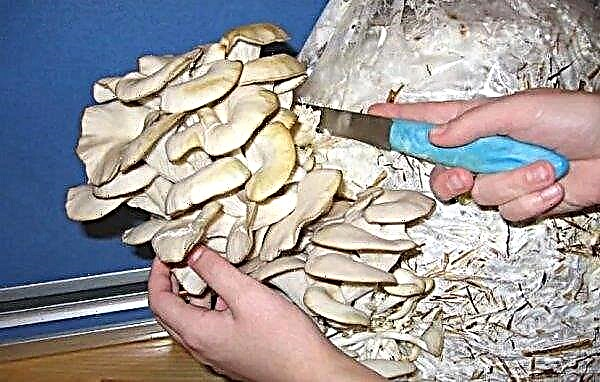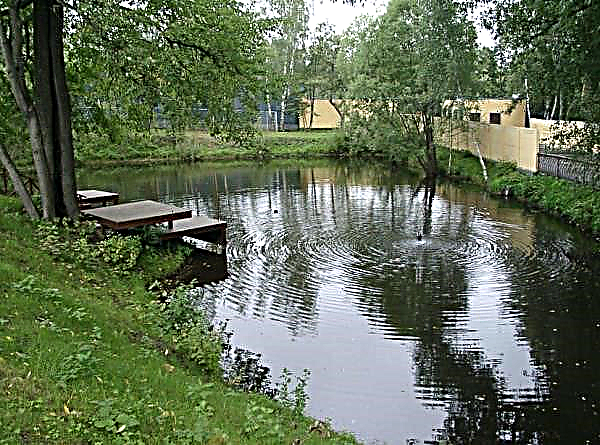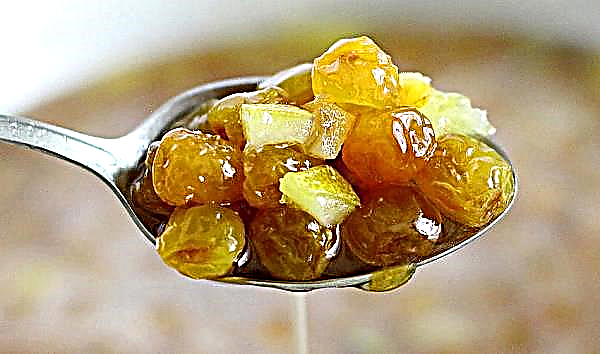Among the early hybrids, which are great for harvesting for the winter, it is worth noting the unpretentious and tasty variety - Boy with a finger. Small-sized fruits, high productivity and unpretentiousness to growing conditions make it the best candidate for industrial cultivation and for a personal plot. Read about the features of the variety and its care in this review.
Selection History and Variety Description
The boy with the F1 finger is a gherkin and is perfect for pickling, and for eating fresh. Like all gherkins, it does not soften when marinated, preserving a crispy texture. The variety was registered in the State Register in 2000. The originator, the Manul company, positions it as intended for cultivation in the Volga region, the Central Black Earth region and the southern regions of Russia. In cooler climatic zones, it is recommended to cultivate the variety in a greenhouse or under temporary film shelter.
Variety characteristic:
- the basic characteristic is an early ripe, self-pollinating (parthenocarpic) cucumber hybrid of the first generation of excellent quality and with a large number of fruits;
- length - up to 12 cm;
- ripening - on the 40th day;
- form - oval, tuberous;
- color - bright green, lighter to the bottom;
- texture - slightly ribbed, with a slight pubescence;
- pulp - without bitterness, aromatic;
- fruit weight - 60 g;
- yield potential - good, about 10 kg / m²;
- disease resistance - high to the mosaic virus, intermediate to scab, anthracnose, powdery mildew.
Did you know? Pollination-free cucumbers grew wild in China and Japan. But the first hybrids of this type were created only in the middle of the last century.
Medium-sized bushes bloom profusely and have a long fruiting period. The finger-boy is a self-pollinated variety, prone to the bundle form of ovary formation - from 2 to 6 pieces are formed at one point. In greenhouses it is recommended to plant 2-3 plants per m² of area, and in the open ground - 3-4.
Advantages and disadvantages of the variety
- Grade Advantages:
- very high productivity;
- early maturity - the first crop can be harvested after 40 days;
- lack of need for pollinating insects;
- the possibility of growing in an apartment, greenhouse, open ground;
- lack of bitterness and voids inside the fetus;
- storage duration;
- good transportability;
- disease resistance;
- long term fruiting - up to 2 months;
- high resistance to drought.

Despite the advantages, hybrid varieties have several disadvantages. So, despite the fact that the variety does not need pollinators, insects do not know about it, therefore, in the process of pollination by them, the fruits can lose their regular shape and deform. In addition, the cost of parthenocarpic cucumber seeds is always higher than that of other varieties.
Did you know? Initially, all the cucumbers were long — up to 40 cm in length. But breeders have created many small forms: they are similar to ordinary ones, but, having reached the maximum size for the variety, they grow further not in length, but in width.
Optimal landing times
For growth and development, cucumbers need a favorable thermal regime. Under normal conditions, the soil for planting warms up by the end of May. Air temperature should be kept at + 25 ° С for 5–7 days. They can germinate at + 18 ° C, but it will be somewhat slower. Therefore, if you plant the Boy’s seeds on the finger of May 1, you will receive the first crop by mid-June.

But such a calculation is not absolutely accurate, as the timing is affected by weather conditions and the growth rate of cucumbers in your garden. Experienced vegetable growers recommend several plantings, starting from the moment when the soil warms up to + 13 ° C, with an interval of 7 days.
The purpose of this method is to provide yourself with a crop, even if the first sowing of seeds dies due to adverse conditions. Seedlings begin to grow in April for planting in May. At the same time, it is taken into account that it will take about 3 weeks to grow it. The maximum period for growing seedlings before the date of planting in open ground is 1 month.
Planting and growing cucumbers
A boy with a finger can grow both in a greenhouse and in open ground. Common to both growing technologies are soil requirements: cucumbers are extremely demanding on its fertility and friability.
Did you know? Initially, parthenocarpic varieties of cucumbers were created only for fresh consumption. However, modern hybrids are no less in demand during salting.
To speed up the harvest, you can plant seeds on seedlings, and then plant them in a permanent place. Sow cucumbers in pots begin in the second half of April. For germination, they need a temperature of at least + 20 ° C. As for lighting, any type is suitable for cucumbers.
Seedling method
Soil quality is critical to a high yield. For planting, you need loose loamy soil, rich in sand or silt. It is possible to improve soil fertility by applying organic fertilizers: peat, compost or manure. The richer the composition of the soil, the higher the yield you will get. To disinfect it from phytopathogens, it is recommended that the soil heat treatment: heating or watering with boiling water. Disinfection with 1% potassium permanganate solution is also carried out.

Cucumbers are very sensitive to transplantation, therefore, in order not to damage the roots, use peat tablets. They include compressed peat. If the tablet is moistened, it begins to swell and takes a cylindrical shape. Planting consists in adding 2 seeds to each tablet.
If both sprout, you simply remove the weaker germ. Moistened tablets are placed in a plastic container and covered with plastic wrap to create a greenhouse effect. Immediately after planting, the air temperature should be around +22 ... + 24 ° С.
Did you know? Phytoncides of a cucumber are capable of destroying bacteria that give bad breath. To get the result, simply press a slice of cucumber against the palate for 30 seconds.
Seeds are also processed before planting. To increase germination, use a growth stimulator. Soaking is carried out for 20 hours. The most popular stimulants are Baikal-EM1, Energen, Zircon. And in order to destroy the pathogenic spores of fungi, they are treated with a 3% solution of potassium permanganate. So that the seedlings do not stretch, after the appearance of cotyledonous leaves, you need to set the thermal regime at + 16 ° C.
Cucumbers are undemanding to light, but if the light source is a window, then the seedlings can stretch. Organize the lighting of containers with plants with special lamps to avoid deformation. Watering the seedlings is carried out with warm water, trying not to wet the leaves - moisture on them can become a medium for the development of fungi. Begin to fertilize the seedlings in the phase of 2-3 real leaves, then repeat feeding after 2 weeks. Fertilizer with a low nitrogen content is suitable for cucumbers - they are introduced along with watering.
Parthenocarpic varieties of cucumbers also include:
In a reckless way
Cucumbers are sown or transplanted into the ground no earlier than 2 weeks after the last frost. They are extremely sensitive to frost, so the temperature of the soil should not be lower than + 13 ° C. The required stable air temperature is +18 ... + 25 ° С, humidity - 60–70%. The site must be protected from cold winds.

When preparing the soil in the fall, 8–10 kg of rotted manure or compost per 1 m² is added, 80 g of superphosphate, 60 g of potassium chloride and ash are added. In the spring, a bed of 60 g / m² of ammonium nitrate is fertilized. The soil for cucumbers should be neutral or slightly alkaline with a pH of 7.0. Large rounded seeds with a pleasant cucumber smell are selected for sowing. It must be remembered that the germination of seeds depends on how long they were stored. Seeds of 2 years ago will already lose 50% germination.
Cucumbers are traditionally planted in rows or on barrows. Their vines must weave. In areas where there is little space, install a lattice or trellis for attaching vines. Sowing is carried out in holes or furrows. Previously, humus or compost is introduced to the bottom.
Important! The crop of cucumbers will be the greater, the fruits will be smaller. The size of the fruit also affects their taste: small — tastier.
The best germination is shown by those seeds that have been previously germinated. The sowing method is wide-row 70 × 12 cm. Seeding depth is 3-4 cm. In the phase of the first true leaf, they break through. Water the seedlings as often as possible: the cucumber is very hygrophilous.
Cucumber care after planting
Caring for cucumbers after planting consists of systematic loosening of the soil, removal of weeds and watering. To increase productivity, it is necessary to take preventive measures against pests and sources of disease. Also, farmers are forming a bush to improve fruiting.
Bush formation
3-5 weeks after transplanting seedlings to a permanent place or when the length of the vine reaches 0.5 m, if the plants are grown from seeds, they begin to form a bush. Cucumber is formed into one stalk, which is wrapped around a support. Around the main stem grow side shoots - stepsons. They must be removed to help the plant retain nutrients for fruit formation. Processing begins at the bottom and advances to the top of the plant. In addition to stepsons, damaged leaves and flowers are removed - they are plucked off with fingers or with garden shears. The stepchild is cut at an angle of 45 °. Pruning is periodically repeated as new shoots are formed.
Processing begins at the bottom and advances to the top of the plant. In addition to stepsons, damaged leaves and flowers are removed - they are plucked off with fingers or with garden shears. The stepchild is cut at an angle of 45 °. Pruning is periodically repeated as new shoots are formed.
For cucumbers in the open ground, the procedure is as follows:
- visually divide the vine into 4 parts;
- remove all side shoots from 4 sheets from the bottom to the conditional third part;
- in the third part, leave 1 sheet on each shoot;
- in the second part - 2 ovaries and 2 sheets;
- in the last part, 3 ovaries and 3 leaves are left.
Important! Do not cut the plant too early: underdeveloped stem (with a length of less than 0.5–0.6 m) will not produce a crop.
Mandatory pruning will contribute to the formation of a good crop. And do not forget that pruning is a stress factor for the plant. If you overdo it, then the plant can lose color.
Fertilizing and watering
Cucumber is 90% water, so it needs regular and frequent watering. Soil should be soaked to a depth of 7 cm. Inadequate watering reduces yield, and irregular leads to the appearance of bitterness in the fruits. The need for watering is determined by hand - if you do not feel soil moisture with your fingers, then you need to water.

Basic rules for irrigation of cucumbers:
- the water pressure should be slow - it is better if you install drip irrigation;
- exclude moisture on the leaves so as not to create an environment for the development of fungi;
- water in the morning - evening watering increases the incidence;
- watering should be regular so that cucumbers are not bitter;
- to retain moisture, cover the root zone with mulch.
Important! Hybrid varieties that do not form a vine, but grow a bush, do not need to be planted. They also do not have to be tied.
If fertilizers are applied during planting, and the bush is powerful, with a strong trunk and a large number of ovaries, then it is not necessary to fertilize it. In other cases, top dressing is carried out every 10-14 days. Cucumbers well perceive feeding from bird droppings or mullein diluted with water in a ratio of 1: 8 and 1:10. Fertilizers are applied before the beginning of active fruiting.
Soil care
Cucumber soil care includes:
- weeding;
- loosening;
- mulching.
Loosen the soil the day after watering - this reduces the density of the soil, which is good for the development of the root system. Loosening is combined with weeding: its task is to weaken the root system of weeds. Small weeds are removed manually, large weeds with a root root system are pulled out. It is easier to do this when the soil is wet. The roots of creeping weeds are cut and removed as much as they can.

Since cucumbers are moisture-loving, when they are grown, they mulch using straw, spruce branches, leaves, sawdust, agrofibre, spunbond, or other material. The thickness of the mulch layer is about 3-5 cm.
Mulch simplifies the process of caring for cucumbers, as it:
- protects against evaporation of moisture;
- inhibits weed growth;
- prevents soil compaction;
- protects plants from pests and fungi in the soil.
Prevention of diseases and pests
The likelihood of diseases depends on the care of the plants, so you need to start by choosing a good, sustainable variety. A finger-boy is resistant to the mosaic virus, a common disease in cucumbers. If you do not thicken the planting, then it will also well tolerate the appearance of stem rot.
Did you know? In English there is an expression "cool as a cucumber" — it reflects the ability of this vegetable to lower blood temperature, so masks from it are recommended to reduce swelling.
The main problems of cucumbers:
- If your plants do not produce fruit, then this is usually not a disease - you are probably overfeeding cucumbers with fertilizers. With an excess of nitrogen, ovaries do not form.
- Aphid - the main pest of cucumbers. It’s very easy to notice them - these are small green insects that are heaped on a vine. Spraying with a solution of insecticidal soap will help get rid of them. Such treatment will also help from other pests that feed on plant sap.

- Powdery mildew may appear if the leaves get wet during watering or in heavy rains. In such a situation, fungicides that are used at the first sign of a problem will help.

Harvesting and storage features
Harvesting is possible as it ripens or massively in July. If you need to transport cucumbers, then carefully cut the fruits so as not to damage them. The yield of the variety is 10-14 kg / m². For pickling, collect fruits about 10 cm long. It is advisable to collect fruits daily, which will stimulate further fruiting.
A good quality fruit has a pronounced cucumber aroma, dense texture, crisp flesh, uniform color. Examples are suitable for storage without external damage. They can be stored in the refrigerator in a plastic film for up to 10-15 days.
Growing cucumbers is not a difficult task at all, and if you grow an early crop, it will become even easier, since there are too few pests of these vegetables. Put your knowledge into practice, and plants will surely please you with a good harvest.



